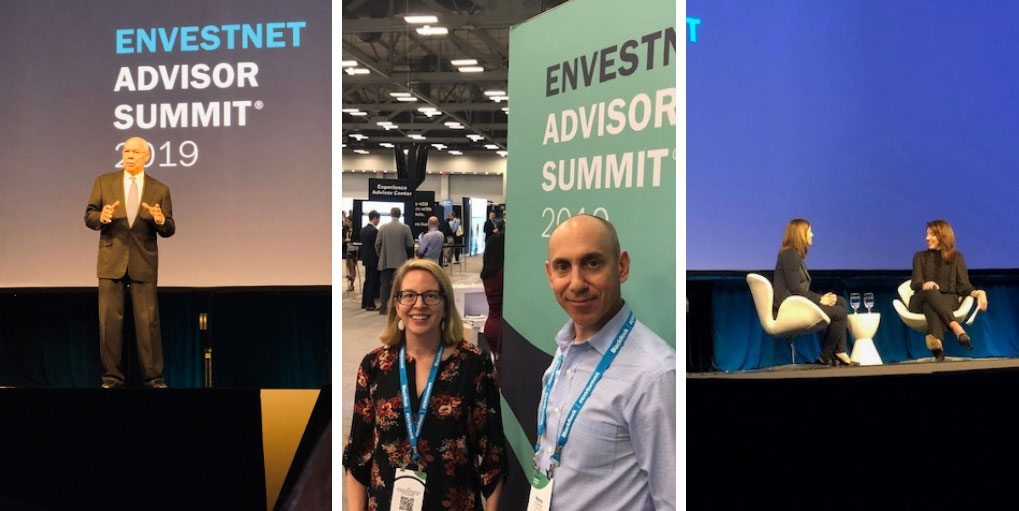We titled our Spring Newsletter: The Check Engine Light is On. The S&P has had its best start of the year in decades. The Stock Market in 2019 is a mirror image to how it ended 2018. So our Research Team hunkered down and spent the month of April studying things under the hood. We found some alarming developments that this Market seems to be ignoring, for now. The inverted yield curve was a big one, which has always signaled stress in the system. It just has not been effective on timing. To us, the yield curve is the check engine light. Sure, you can keep driving when the light hits the dashboard, but the responsible thinking is you are on borrowed time until the issue is fixed. The Bond Market is telling a different story than the Stock Market, which hit new all-time highs earlier this week. The Stock Market continued its rapid ascent in April, with now the best start for the S&P since 1987. For those of you who remember, October of that year brought trouble.
Trade talks between the US and China continue with a deal apparently imminent. How often have we heard this? But word is spreading that it is going to be an inferior deal to what was originally outlined. The rumor is that President Trump wants a deal done and quickly to help the Stock Market and his popularity as a deal maker. The problem is, a short-term win could be a long-term loss. China’s patience has been seemingly working. China plays the long game and they’re in it to win it. Short-termism has become an epidemic in today’s society. Instant gratification is constantly the focus at the expense of the bigger picture. Washington and Wall Street are certainly short-term focused on earnings and election cycles. Pushing out difficult decisions is much easier, but just adds to the problem. Look at Brexit. The British keep kicking that can down the road.
Earnings are the primary driver of stocks. Earnings are contracting for the first time since 2016. This was expected. It was impossible to match the 20% growth last year. Less bad reports are the theme right now, not explosive growth. So that means that the Stock Market, and underlying stock prices, have increased 100% by multiple expansion. Investors are paying up for slowing growth. The Fed’s 180-degree switch from tightening to support was the biggest driver of stocks this year. It triggered the rally. The Fed also triggered the selling last Fall. The Stock Market is now very expensive, but that can last an extended period of time. At current valuations on both price-to-earnings and price-to-sales, the S&P 500 is priced for near perfection. A lot has to go right for it to continue. But it doesn’t generally end well.
Another indicator is the white-hot IPO market. It feels a lot like 1999 again. Investors will seemingly pay anything for a compelling opportunity. For example, the vegan food company, Beyond Meat, had its IPO this week. The stock jumped nearly 200% on its maiden voyage, by far the best stock debut in a crowded IPO market. The company is now worth $4 Billion. The trend towards fresh and healthy food is undeniably, and perhaps irreversibly, strong. The future seems bright for a company like this. But price matters. How much people are willing to pay for things clearly plays a role in the return on investment. Beyond Meat is now trading at 40X its annual revenue. This is an absolutely absurd valuation, particularly for a food company. For comparison, Tyson Foods which is a leading meat company trades at less than 1X its annual revenue. Beyond Meat is definitely growing much faster than the mature Tyson corporation is, and deserves a higher valuation. But this company is now more expensive than most high-flying software companies, and those stocks are already expensive by historical terms. Beyond Meat is not profitable and doesn’t plan to be anytime soon.
For comparison, Amazon, which has always been expensive, trades at 4X sales and the human resource software company, Workday, trades at a whopping 16X. The S&P 500 in aggregate, trades at 2.2X 2019 revenues. It has only been more expensive at this measurement one other time in history. That was in 1999, just before the Dot.com bubble burst. Market leadership is narrowing. The number of stocks that are driving the S&P 500 higher is shrinking. The rally is not broad-based. There are now 504 stocks in the S&P 500. Since the all-time highs first hit last September, 252 of those stocks are higher, while the other 252 are lower. Of those that are higher, 135 of them are up 10% or more. Of those that are lower, 136 of them are down 10% or more. The spread between cheap stocks and expensive stocks is the widest it’s been in 7 decades. The most expensive stocks are doing the best while the cheap ones are apparently cheap for a reason. This was the case 20 years ago too.
We strongly believed that the crash in December was overdone and that an oversold bounce would take place in 2019. We picked our spots to purchase new securities, both equities and fixed income. We’ve also trimmed some positions and out-right sold others. At this stage, the Stock Market has roared much further and faster than we anticipated. We got defensive too early. But as risk managers, our job is to first protect capital while we seek opportunities to grow it. We just don’t see how this momentum can sustain itself and the excessive valuations have us quite concerned about what’s ahead. The gains have been paid forward in our estimation. There is a lot of chasing stocks and talks of a Market melt-up. “Fear of missing out” or “this time is different” attitudes have permeated the Market mentality again. Confidence breeds complacency, and complacency breeds recklessness. High levels of confidence are usually present near market tops, while a lack of confidence is the mark of a bottom. Making money often masks underlying problems. The timing of a bottom is more precise than a top. Fear is a stronger sensation than greed.
Overconfidence can be an investor’s biggest enemy. It’s only a matter of time. This rally can certainly continue. But the risk-reward balance is decisively skewed towards elevated risk. More often than not, it pays to be skeptical. That’s where we find ourselves. We prefer to be early rather than late.
Have a nice weekend. We’ll be back, dark and early on Monday.
Mike
Investing in Knowledge
We are constantly seeking ways to expand our knowledge and stay at the forefront of the investment industry. So this week, our very own Meredith Rosen and Norman Mushkot were on the road at the 2019 Envestnet Advisor Summit, which included a fireside chat on the future of technology in finance with President and CEO of Nasdaq, Adena Friedman as well as an inspirational keynote by General Colin Powell.








